- 한국어
- English
- 日本語
- 中文
- العربية
- Español
- Français
- Deutsch
- Pусский
- Tiếng Việt
- Indonesian
|
Monthly KOREA’s Apr. 2020 issue. ▶Link to Webzine |
Hansik Hero
A girl who frequented Changdeokgung Palace in Seoul with her mother is now a master chef of royal cuisine. Han Bok-ryeo, designated a Living National Treasure by the Korean government, is the latest to carry on a tradition that started in 1944. At the kitchen of the Institute of Korean Royal Cuisine, which Han Bok-ryeo heads, the master chef spoke about her culinary art.
Written by Kim Samuel Photographed by Studio Kenn
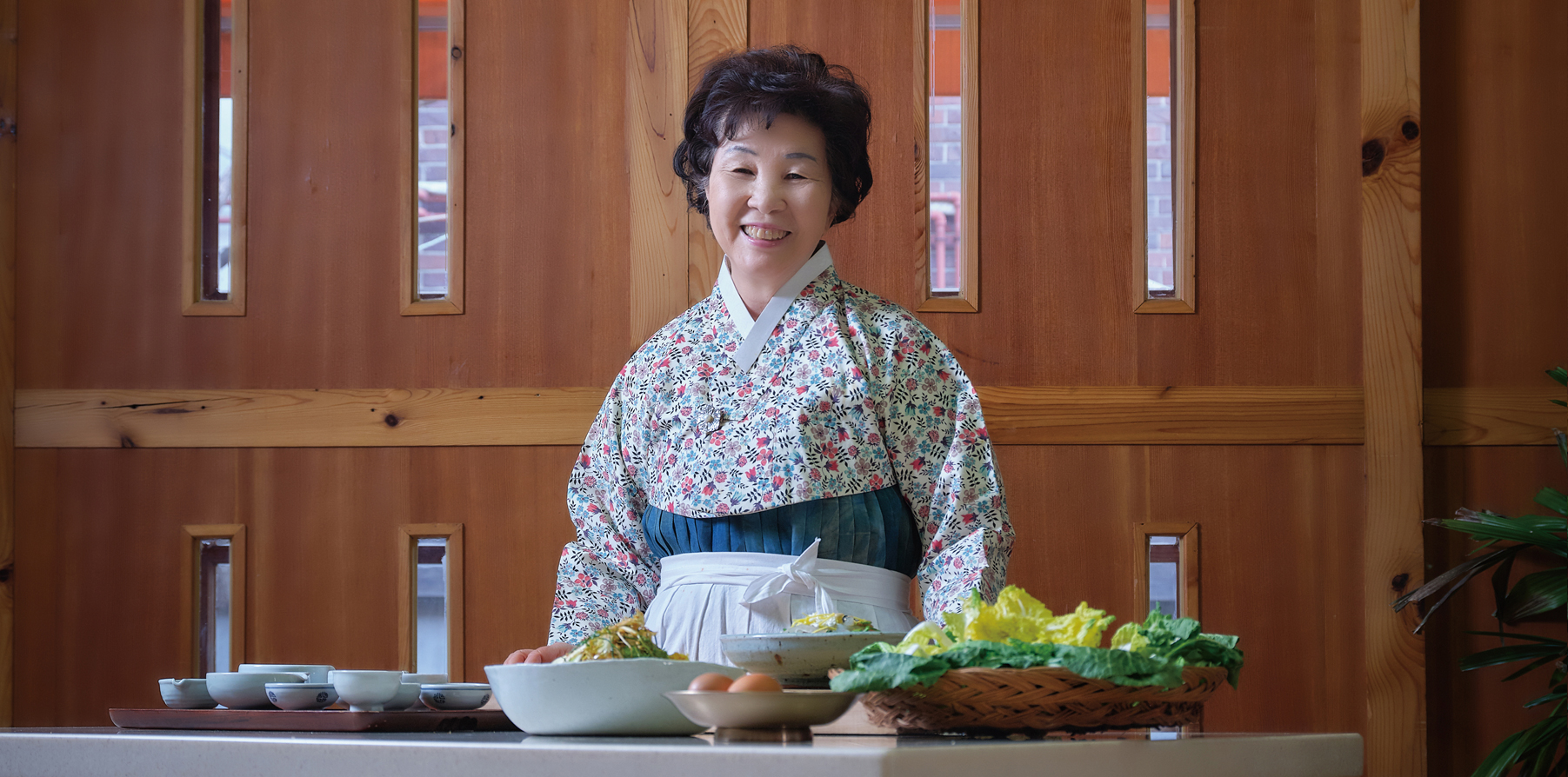
At the 2000 inter-Korean summit, the world’s eyes were on the Korean Peninsula. A crew of 20 South Korean chefs led by Han Bok-ryeo traveled to the North Korean capital of Pyeongyang to present royal cuisine from the Joseon Dynasty. Contrary to Hansik conventions of serving a bounty of plates all at once, the contingent organized a course menu of items served individually in sequence. Each course introduced about a dozen dishes.
In 2010, the G-20 summit hosted by Seoul ushered in the globalization era of Hansik. Customized dishes with a Korean base were developed to suit the appetites of each summit official or country represented. From selecting ingredients to complementing each entrée with condiments, each procedure posed a new culinary challenge.
“Hansik is referred to as bapsang (a table with a rice-based meal). Grains like rice comprise staples or the main dish, clearly distinguished from side dishes (banchan). Seasonal ingredients, inventive and fermented condiments, and eclectic cooking techniques produce appealing culinary fare. Prepared in accordance with the laws of nature, this nutritious cuisine pleases not only the eyes and the palate but also the body,” Han said. “The two Koreas met around these foods; the theme of convergence contextually befitted the site of congregation of the two global leaders.”
Sharing and Serving
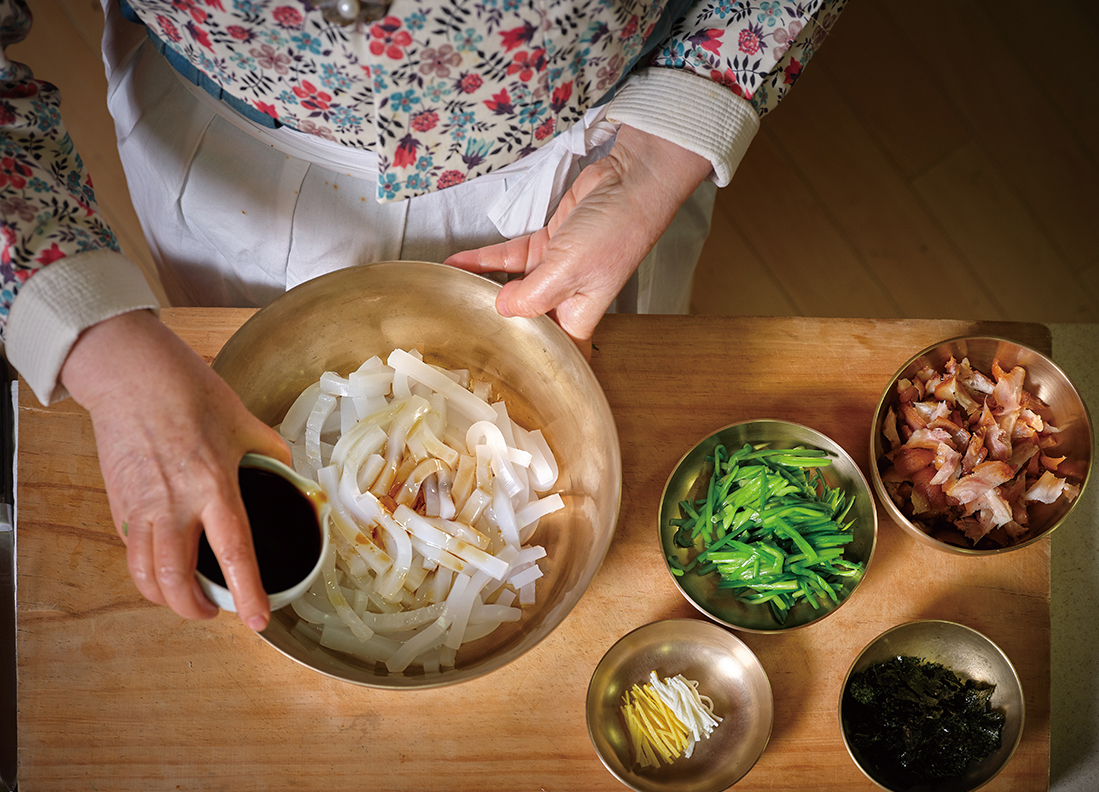
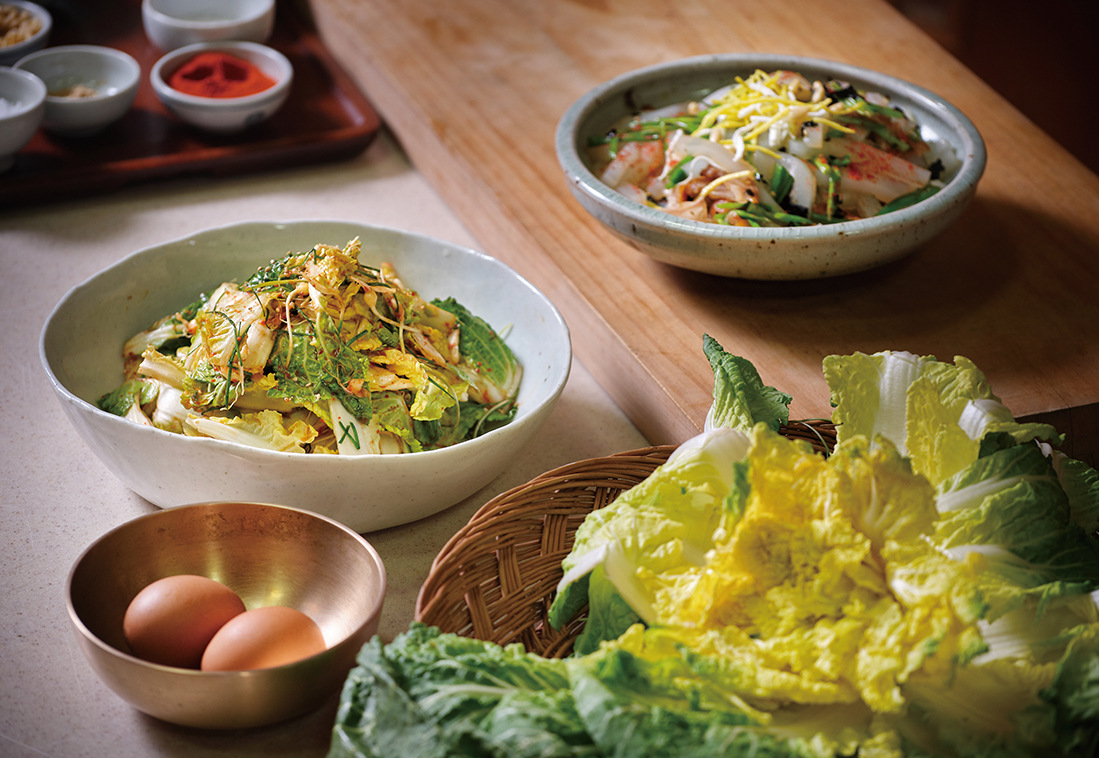
Royal cuisine master chef Han Bokryeo, designated a Living National Treasure by the government, makes mung bean jelly salad (known in Korean as tangpyeongchae or cheongpomungmuchim). / Spring greens and traditional seasoning enliven the sweet, crunchy salad.
Royal cuisine master chef Han Bokryeo, designated a Living National Treasure by the government, makes mung bean jelly salad (known in Korean as tangpyeongchae or cheongpomungmuchim). / Spring greens and traditional seasoning enliven the sweet, crunchy salad.
Five hundred years of the Joseon Dynasty is extensively documented in “Uigwe: The Royal Protocols of the Joseon Dynasty,” a record of royal customs that UNESCO included on the list of items of the Memory of the World. “Uigwe” contains detailed information on ceremonies ranging from weddings and funerals to banquets, and even instructions for building tombs. For the royal banquet, protocols for presenting side dishes are outlined down to minor details like the number of dishes, the height of plated items and garnishes for plating.
“Contrary to expectations of palaces as sites of indulgence and surfeit, that wasn’t the case. Manifest in regal feasting tables was the Joseon spirit of service and sharing,” Han said. “Based on the expectation that the emperor set an example for his people, banquet cuisine was assembled under such a spirit and a philosophy of the utmost care and sincere service. Once regional specialties were served, seasoned chefs skillfully arranged the tabletop for optimal presentation. Cuisines were considered precious gifts, and sharing them was a prideful and cherished event.”
Lingering Legacy
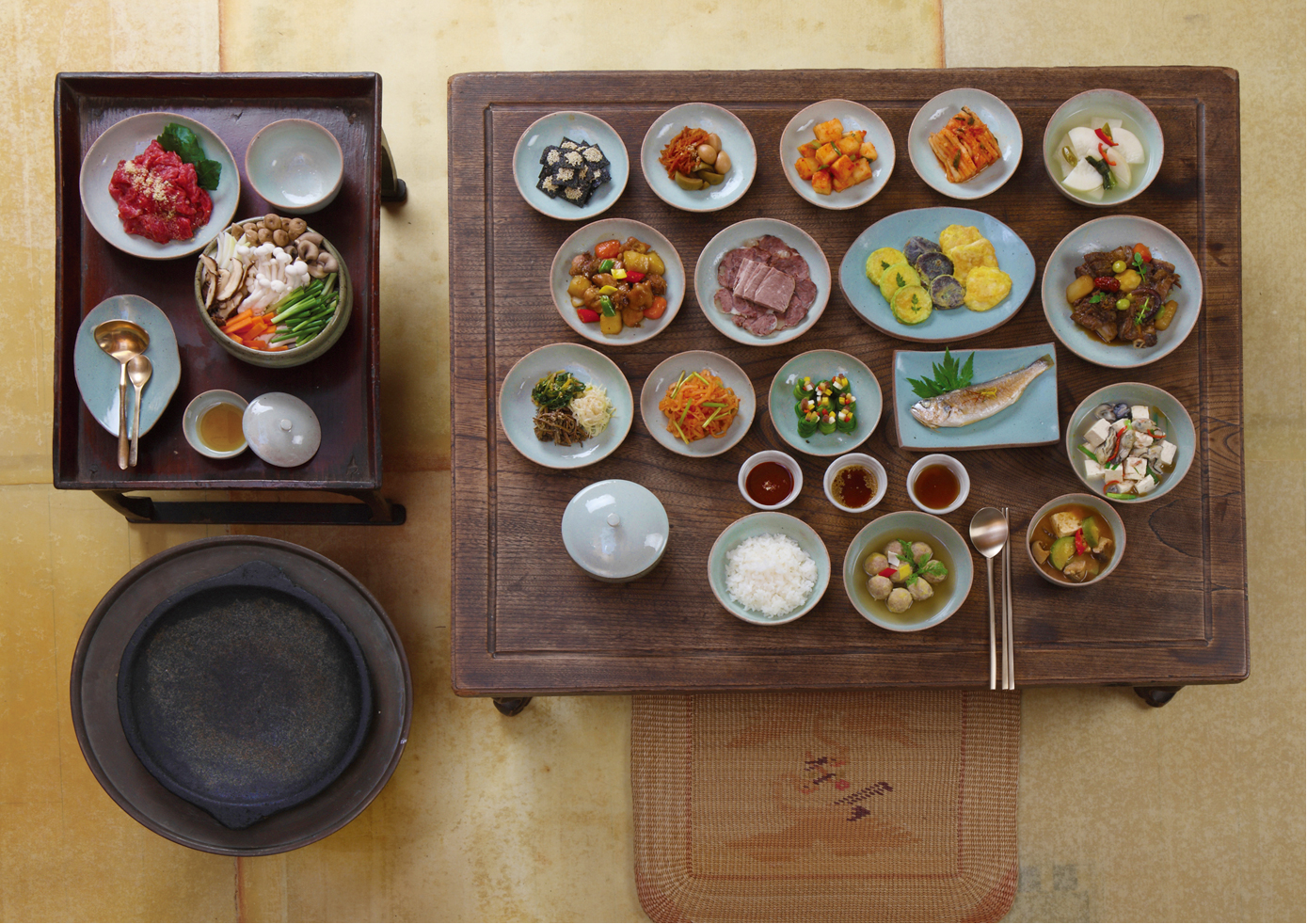
A hotpot (jeongol) meal with nine dishes is a traditional assortment of soup and side dishes (banchan) around rice. © Institute of Korean Royal Cuisine
At the restaurant Naksunjae Sojubang of Changdeokgung Palace, Lady Han Hui-sun from 1944 passed on to Hwang Hye-seong, a Korean culinary legend, the methodology for cooking royal cuisine through 30 years of training. When her mentor died in 1972, Hwang was designated a master to carry on Han’s legacy. Han Bok-ryeo was groomed as Hwang’s successor despite being age 25 at the time. She perused everything about Joseon history, and even mastered exotic cuisines from other parts of the world. Devoting five decades to revitalizing the essence of royal cuisine through her study and teaching, the master chef spends her days transferring her predecessors’ lessons to her potential successors.
“Historical records specify the details for food preparation, from cuisine names to ingredient lists and measurements. Comparing instructions for handling ingredients with modern culinary practices shows a disparity between contemporary and ancient methods. Old cookbooks remain and are now open to the public. Such records let us conjecture and envision royal cuisine. The sheer amount of work involved in such processes is not for undertaking by a single person,” Han Bok-ryeo said.
The preservation and promotion of Joseon royal cuisine is supported by the Institute of Korean Royal Cuisine (www.koreanroyalcuisine.org), which is headed by Han Bok-ryeo.
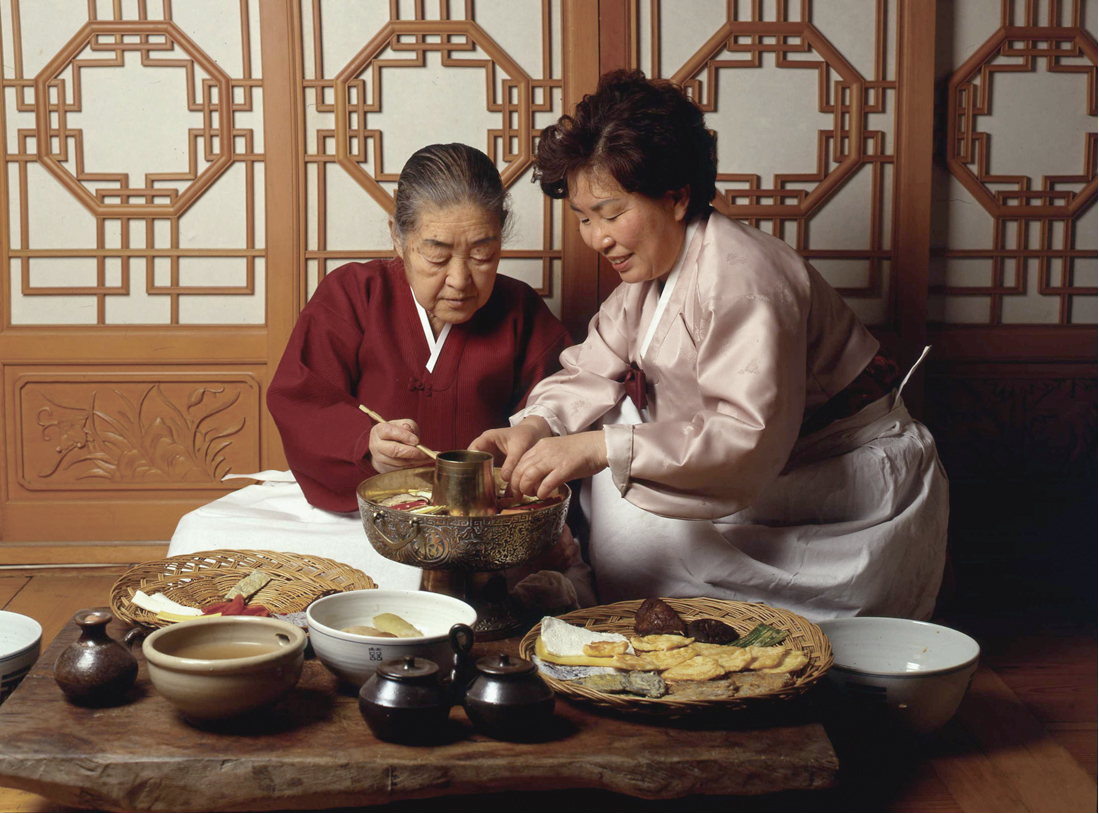
Two master chefs, Hwang Hye-seong and Han Bok-ryeo, are busy preparing sinseollo. © Institute of Korean Royal Cuisine